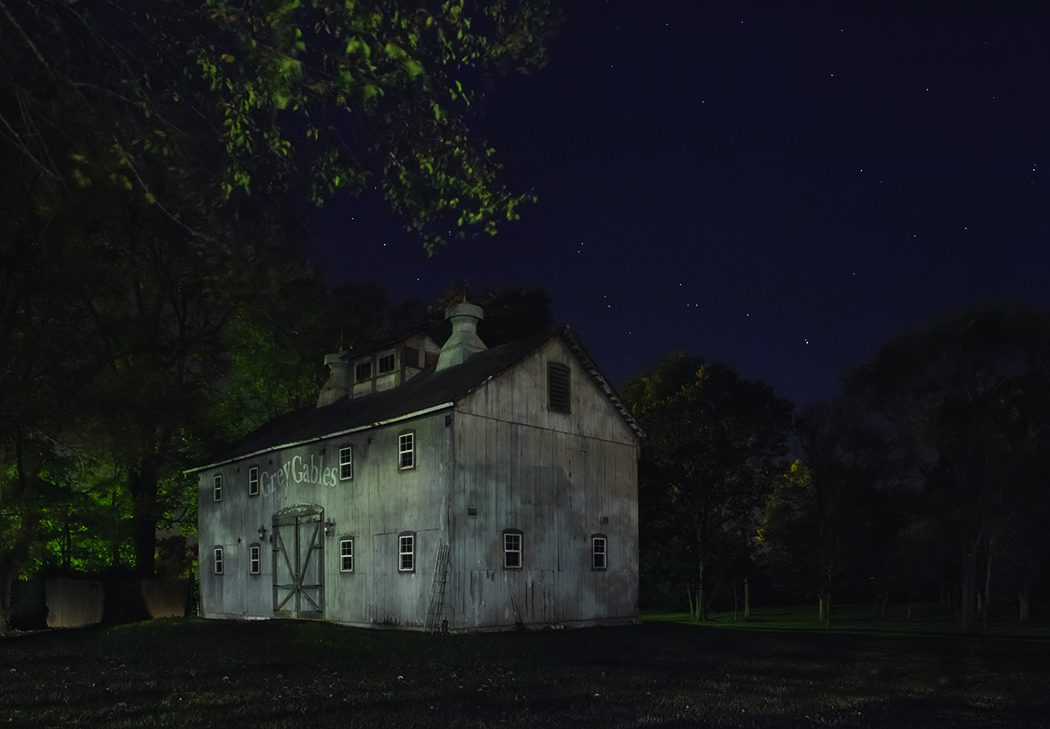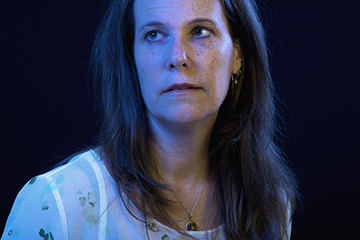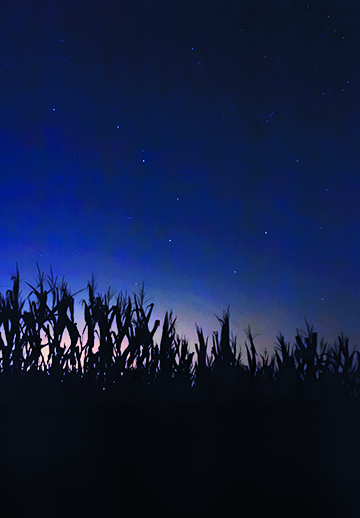
Jeanine Michna-Bales captures a glimpse of history
Can a modern image accurately tell an ancient story? That’s a question Jeanine Michna-Bales answers in her 1,400-mile photographic journey to depict the Underground Railroad from Louisiana to the Canadian border.
“I found research that [those on the Underground Railroad] traveled 20 miles per night. So that’s how I shot — 20 miles apart and mostly at night,” says the East Dallas photographer.
All of those images, shot with a long exposure to give them the visual texture of an oil painting, tell a vivid American story. Fifteen years of research and photography culminated in the photo-driven book “Through Darkness to Light: Seeking Freedom on the Underground Railroad,” released this year by Princeton Architectural Press.
“I feel like this project picked me; I didn’t exactly choose it,” Michna-Bales says.
Growing up in Indiana, she remembers learning about the secretive path to freedom, used by slaves escaping their chains during the pre-Civil War years. Just north of the slave-state Kentucky, Indiana was the first free state many entered on their pilgrimage north. Quaker settlers led the state’s anti-slavery movement beginning in 1805 and were known to help men and women who fled slave owners once they crossed the raging Ohio River.
“They called it the River Jordan because it separates the North and South,” Michna-Bales says.
The Ohio River was near the home of freed slave Chapman Harris, Michna-Bales says. He was a reverend and a blacksmith, with a shop right on the banks. He used his heavy tools to signal fleeing slaves when it was safe to cross the water.

Jeanine Michna-Bales (Photo by Danny Fulgencio)
Michna-Bales began her photo series much farther south, however, at the scenic Magnolia Plantation on the banks of the Cane River in Derry, La. It’s a National Historic Monument where “slave quarters” still stand that once housed some of the 350 forced laborers who lived on the land when the plantation was a commercial operation.
“It was a venerable city in its day,” Michna-Bales says. “It just spoke to me.”
She didn’t have a set direction from there, just a loosely knit collection of sites where slaves could hide out or find respite, like the cotton fields at the Frogmore Plantation in Ferriday, La. Or the home of famed abolitionist Levi Coffin in Fountain City, Ind. As the story goes, when Coffin was a child, he would lead white slave trackers astray to assist fleeing slaves in their escape. But that was just the beginning of his work as an abolitionist.
“He and his wife, Catharine, supposedly helped more than 3,000 slaves,” Michna-Bales says.
Other photos in the collection depict places or things representative of a slave’s journey, which was often treacherous and uncertain. Moss growing on trees or the Big Dipper, both of which help a traveler find due north, were critical to the visual story-telling because it’s the only thing a slave had to find their way.
“I found a number of slave narratives that told me a lot about their journey,” Michna-Bales says.
Some of her other research happened in a way that is hard to explain, except to call it kismet. Like when she was looking for the home of abolitionist William Beard — she knew he lived in Union County, Ind., but couldn’t confirm an exact location. It was 2014 and her photo “Decision to Leave” of the Magnolia Plantation, earned first place at the Center Choice Awards, a prestigious national honor. While at the award ceremony, she got to talking to the uncle of another winner, who just so happened to be a decedent of Beard.
“So he was able to give me the address,” she laughs.
Then there was the time she was photographing a house rumored to be a haven on the Underground Railroad. As she was pulled over on the side of the road shooting, a pair of local law enforcement officer rolled up to make sure she wasn’t in need of help. After telling them what she was doing, one of the officers lit up.
“He walks forward and says, ‘I can verify this house was on the Underground Railroad because it belonged to my father-in-law,’ ” she says.
After so many years, miles and memories, Michna-Bales amassed hundreds of images that, all strung together, provide a rich look at this journey to freedom.
In addition to the photography book, “Through Darkness to Light” is a traveling display of Michna-

Bales’ large-format prints. It’s been signed to a five-year exhibition schedule that will span more than 35 cities. That means thousands will see the thick foliage and uneven terrain traveled by some of the estimated 75,000 who used the Underground Railroad.
“I’m in awe that people had to go through this journey to get their freedom,” Michna-Bales says.
She’s already working on her next photo displays, one on fall-out shelters and another on earthquakes caused by fracking. She’s most interested in advocacy art, and is inspired by the conversations “Through Darkness to Light” has sparked.
“A lot of people call it America’s first civil rights movement,” she says. “Civil rights are being discussed all over the country right now, and [the Underground Railroad], in some ways, is where it all started.”
Find “Through Darkness to Light” at jmbalesphotography.com or on Amazon.





